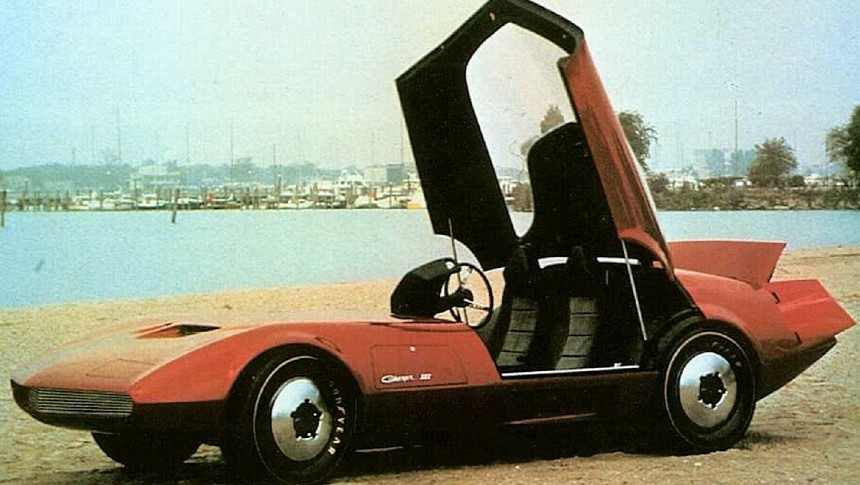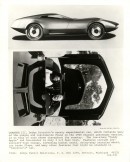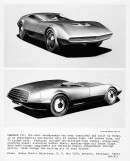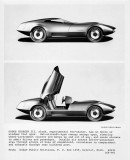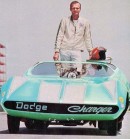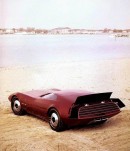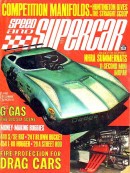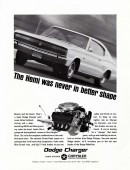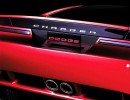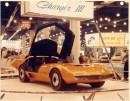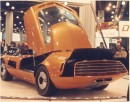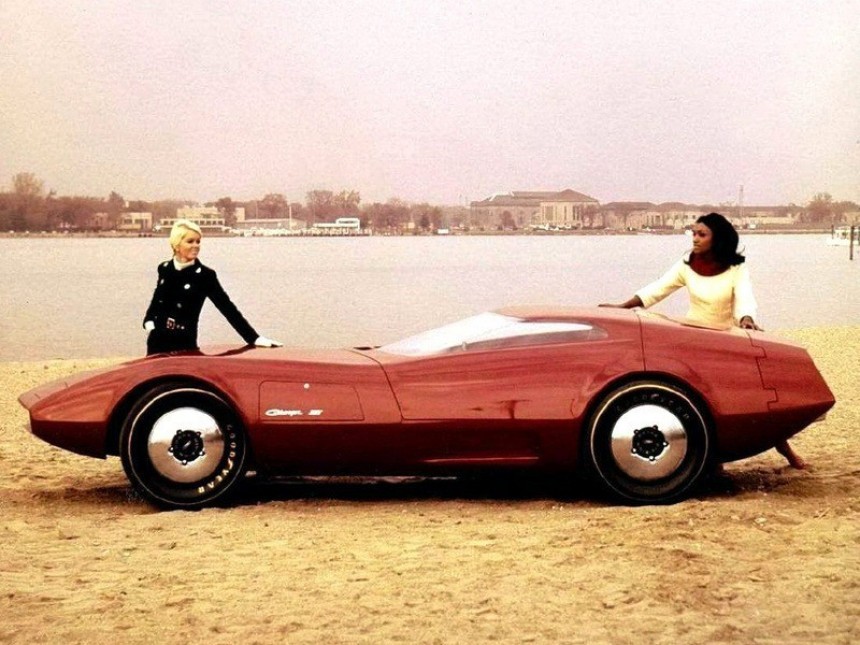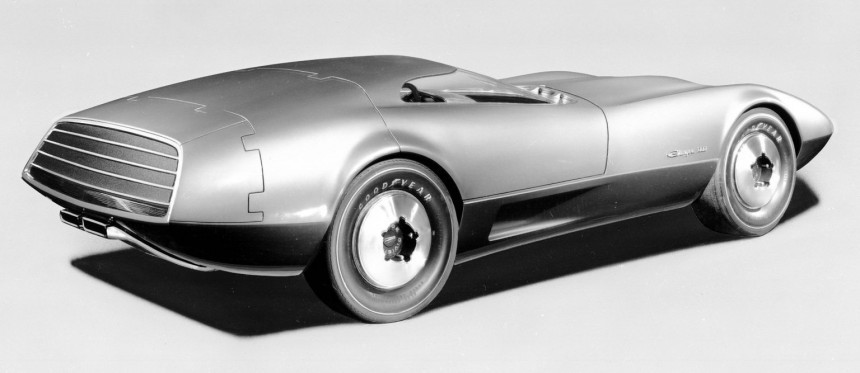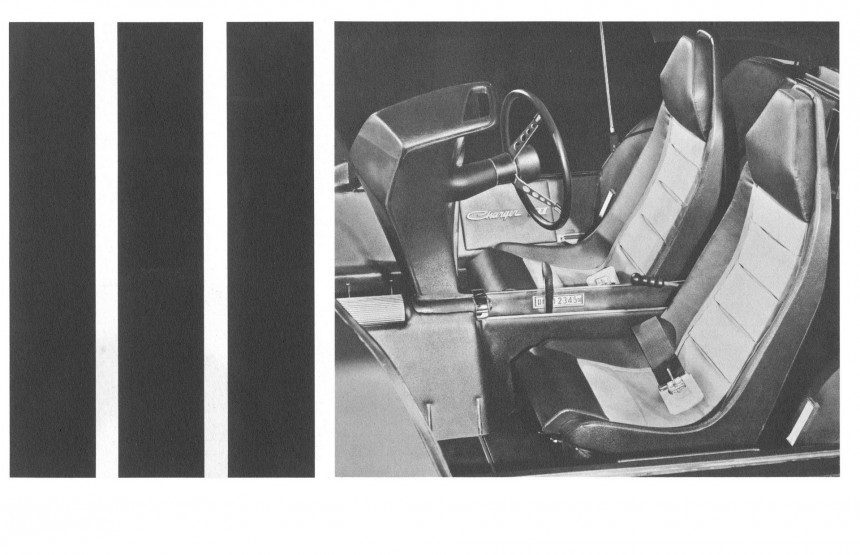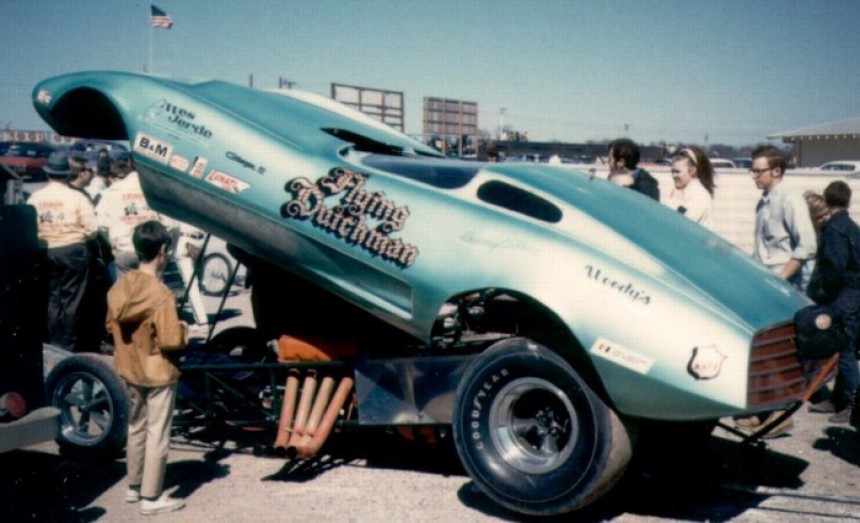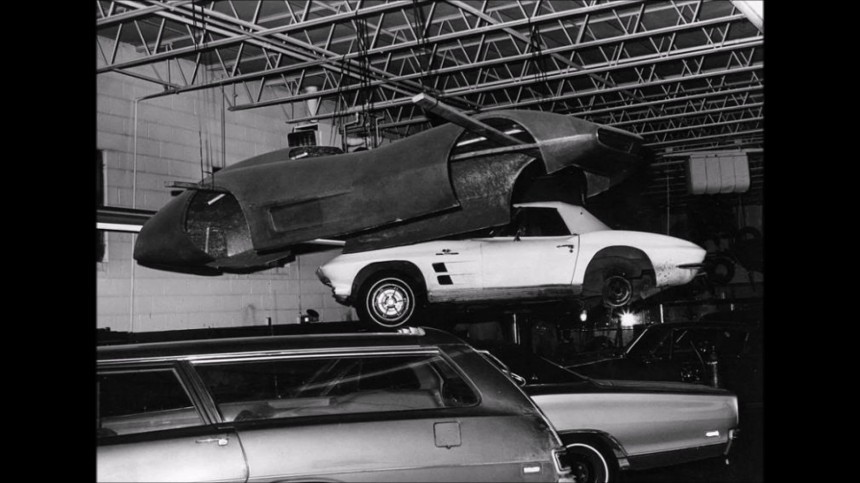The Challenger SRT Demon 170 is undoubtedly Dodge's pinnacle of unrestricted, uncompromised go-fast engineering. Or is it? 55 years before the 1,000+hp monster broke cover, a special Mopar would have given today's Demon a tailpipe whooping' of quarter-mile proportions. Perhaps the greatest Dodge of all time, the Charger III was a downright spaceship. Intended to be a concept and nothing else, the mad automobile got more than a fair share of high-speed fame in the end.
The Charger was Dodge's horsepower warrior muscle, while it also paved the drag strip for the Challenger of 1970. Although the first generation, launched in 1966, carried naval cannon firepower (a 426-cubic inch hemispherical heads ogre), the model was not a fantastic box office success.
In 1968 the Charger got a complete body makeover, which worked miracles. The smooth looks – instantly immortalized through the greatest car chase scene in the movie universe (Bullitt) – became a symbol of that era. Look over the film's theatrical release poster – which car is in the foreground?
That's right – the Dodge; that's how cool the restyled Charger was. But the Chrysler head honchos thought it wasn't enough and came up with something even more radical. The '68 Charger left an air-cleaving impression, but it was a brick compared to this eponymous sibling.
The Dodge Charger III made its first public appearance at the Chicago Auto Show in 1968 – as a concept car. To call it 'wild' would be like saying a grizzly bear can hunt – it was Dodge's most aerodynamic automobile ever.
The term 'concept car' wasn't widely spread across the gearheads' verbiage in the late sixties, so Chrysler referred to it as an 'idea car.' We could easily add any superlative-denoting adjective to that name, but it still wouldn't do it justice.
Sure, the overall shape is strikingly familiar – the C3 Corvette profile is easy to spot on the front end of the Dodge. The rest of it, however, is something else. Starting with the low profile – 42 inches tall (1,066 millimeters), just two inches above the full-blown racer GT40 from the third Detroit Big Ford Motor Company.
It isn't only the profile and fluid lines that contrast intensely with the rest of the Dodge gang of that era. The engineering stands out, starting with the lack of doors and windows. A fighter jet-style canopy that tilts backward (pushed by hydraulic struts) is the means of access in the cabin.
The interior is another slight hint at the sportscar from Chevrolet – two seats only – but the resemblances stop there. While the number of occupants may coincide, the accommodation is nothing like GM's traditional design. First, the steering assembly (wheel and column) sways over the full-length center console (together with the instruments cluster) to allow the driver to get in. The seats also raise and slide back to make more room for entry.
Since the wraparound windshield has no vents, fresh air gets in the passenger compartment through the grille behind the hood, just under the windshield. The flow-through ventilation system continuously fans the cabin before evacuating stale air through purpose-built ports in the bulkheads.
The Charger Concept III's ultra-long hood left no space for a trunk – no mention of a luggage compartment in the Dodge press release. The swing-away gauge pod was designed in the most minimalistic manner attainable. The bullet-shaped sportscar had a service hatch behind the left front wheel that allowed regular checks for water, oil, and battery levels, as well as fuses.
No windows or side mirrors looked super cool, but it wasn't practical from a motoring standpoint. A periscope-type wide-angle rearview mirror popped up from the roof, leaving the driver only a tiny opening to check the traffic behind. The Charger III was never more than a show car, a concept aimed at taunting buyers with a glimpse of the future (as Chrysler envisaged it).
Three bodies were built, one painted gold, the second sprayed with a rich shade of red, and a third one left without a livery. The shiny yellow example was taken to Chicago at the annual car show, the red one served as a press photo model – see them both in the gallery – and the last one had a short but glorious track record.
Being a push-mobile - a non-operational car without an engine and transmission – the experimental automobile didn't boast any performance numbers or mechanical specs. The presser photos revealed a five-speed automatic gearbox with the shift lever over the center console. Dodge limited to saying the engine bay was large enough to accommodate any powertrain in the Chrysler lineup, including the beefy 426 HEMI.
This statement strongly hints at the high-speed factor and an engineering feature that pointed at the go-fast nature of the Charger III. Obviously, the air-splitting profile left no room for confusion regarding the car's intended purpose, but the rear flaps made it clear.
The 'idea car' proposed active air brakes that worked in tandem with the regular friction-type ones installed on each wheel. The overall styling kept air drag to a minimum by eliminating any unnecessary elements that could have produced turbulent whirlwinds. No side mirrors, no ornaments, no high-profile contours. The Kamm-style tail had twin rectangular exhausts and full-width lamps and nothing else.
While two examples were crushed, the third survived and had a brief but shining racing career. Funny Car drag racer Al "Flying Dutchman" Vander Woude acquired the Charger III body and turned it into a track sensation. The body was a show-stopper – although, from a high-performance perspective, it left a lot to wish for.
Despite the blown 426 HEMI firepower, the car wasn't a sure winner, because it was more than a handful to control. A two-speed automatic TorqueFlite and a 4.11 Dana rear worked overtime to put the power to the ground. The 6-71 supercharger – overdriven 32% - fed fresh air for the 90% nitro/10% alcohol mixture.
In 1970, the car bested a 7.755-second quarter-mile at 182.54 mph (293.7 kph), but its driver was confident it could go much lower. The Demon 170 of 2023 definitely has something to look up to, albeit only in inspirational symbolic form.
The surviving Charger III body was discovered at a Dodge dealership in Illinois at the end of the sixties. The place was already a muscle car holy land: Grand Spaulding, Chicago, to be exact – better known to Moparists as Mr. Norm's. What better way to give the mind-blowing experimental Charger a new breath of life?
'Flying Dutchman' Woody Vander Woude built a custom chassis to fit in the very tight space of the shell and fabricated the interior himself. The famous photo of Vander Woude standing tall through the Charger III's escape hatch is in the gallery, and so is the one showing the car's body hanging in the rafters of the famous Grand Spaulding Dodge.
For over two decades after the Charger III's introduction in 1968, Dodge never went beyond flirting with the idea of a pure two-seat sports car. Finally, the dream caught metal shape in 1989 with the introduction of another Mopar legend, the Viper RT-10.
And ten years after this, another concept Charger emerged – the 1999 R/T that foretold the four-door continuation of the famous muscle name of the Golden Era. It is in this car that the styling cues of the fantastic Charger III are most familiar. However, the performance sedan was a much more domesticated Dodge vision.
In 1968 the Charger got a complete body makeover, which worked miracles. The smooth looks – instantly immortalized through the greatest car chase scene in the movie universe (Bullitt) – became a symbol of that era. Look over the film's theatrical release poster – which car is in the foreground?
That's right – the Dodge; that's how cool the restyled Charger was. But the Chrysler head honchos thought it wasn't enough and came up with something even more radical. The '68 Charger left an air-cleaving impression, but it was a brick compared to this eponymous sibling.
The term 'concept car' wasn't widely spread across the gearheads' verbiage in the late sixties, so Chrysler referred to it as an 'idea car.' We could easily add any superlative-denoting adjective to that name, but it still wouldn't do it justice.
Sure, the overall shape is strikingly familiar – the C3 Corvette profile is easy to spot on the front end of the Dodge. The rest of it, however, is something else. Starting with the low profile – 42 inches tall (1,066 millimeters), just two inches above the full-blown racer GT40 from the third Detroit Big Ford Motor Company.
It isn't only the profile and fluid lines that contrast intensely with the rest of the Dodge gang of that era. The engineering stands out, starting with the lack of doors and windows. A fighter jet-style canopy that tilts backward (pushed by hydraulic struts) is the means of access in the cabin.
Since the wraparound windshield has no vents, fresh air gets in the passenger compartment through the grille behind the hood, just under the windshield. The flow-through ventilation system continuously fans the cabin before evacuating stale air through purpose-built ports in the bulkheads.
The Charger Concept III's ultra-long hood left no space for a trunk – no mention of a luggage compartment in the Dodge press release. The swing-away gauge pod was designed in the most minimalistic manner attainable. The bullet-shaped sportscar had a service hatch behind the left front wheel that allowed regular checks for water, oil, and battery levels, as well as fuses.
Three bodies were built, one painted gold, the second sprayed with a rich shade of red, and a third one left without a livery. The shiny yellow example was taken to Chicago at the annual car show, the red one served as a press photo model – see them both in the gallery – and the last one had a short but glorious track record.
Being a push-mobile - a non-operational car without an engine and transmission – the experimental automobile didn't boast any performance numbers or mechanical specs. The presser photos revealed a five-speed automatic gearbox with the shift lever over the center console. Dodge limited to saying the engine bay was large enough to accommodate any powertrain in the Chrysler lineup, including the beefy 426 HEMI.
The 'idea car' proposed active air brakes that worked in tandem with the regular friction-type ones installed on each wheel. The overall styling kept air drag to a minimum by eliminating any unnecessary elements that could have produced turbulent whirlwinds. No side mirrors, no ornaments, no high-profile contours. The Kamm-style tail had twin rectangular exhausts and full-width lamps and nothing else.
While two examples were crushed, the third survived and had a brief but shining racing career. Funny Car drag racer Al "Flying Dutchman" Vander Woude acquired the Charger III body and turned it into a track sensation. The body was a show-stopper – although, from a high-performance perspective, it left a lot to wish for.
In 1970, the car bested a 7.755-second quarter-mile at 182.54 mph (293.7 kph), but its driver was confident it could go much lower. The Demon 170 of 2023 definitely has something to look up to, albeit only in inspirational symbolic form.
The surviving Charger III body was discovered at a Dodge dealership in Illinois at the end of the sixties. The place was already a muscle car holy land: Grand Spaulding, Chicago, to be exact – better known to Moparists as Mr. Norm's. What better way to give the mind-blowing experimental Charger a new breath of life?
For over two decades after the Charger III's introduction in 1968, Dodge never went beyond flirting with the idea of a pure two-seat sports car. Finally, the dream caught metal shape in 1989 with the introduction of another Mopar legend, the Viper RT-10.
And ten years after this, another concept Charger emerged – the 1999 R/T that foretold the four-door continuation of the famous muscle name of the Golden Era. It is in this car that the styling cues of the fantastic Charger III are most familiar. However, the performance sedan was a much more domesticated Dodge vision.
